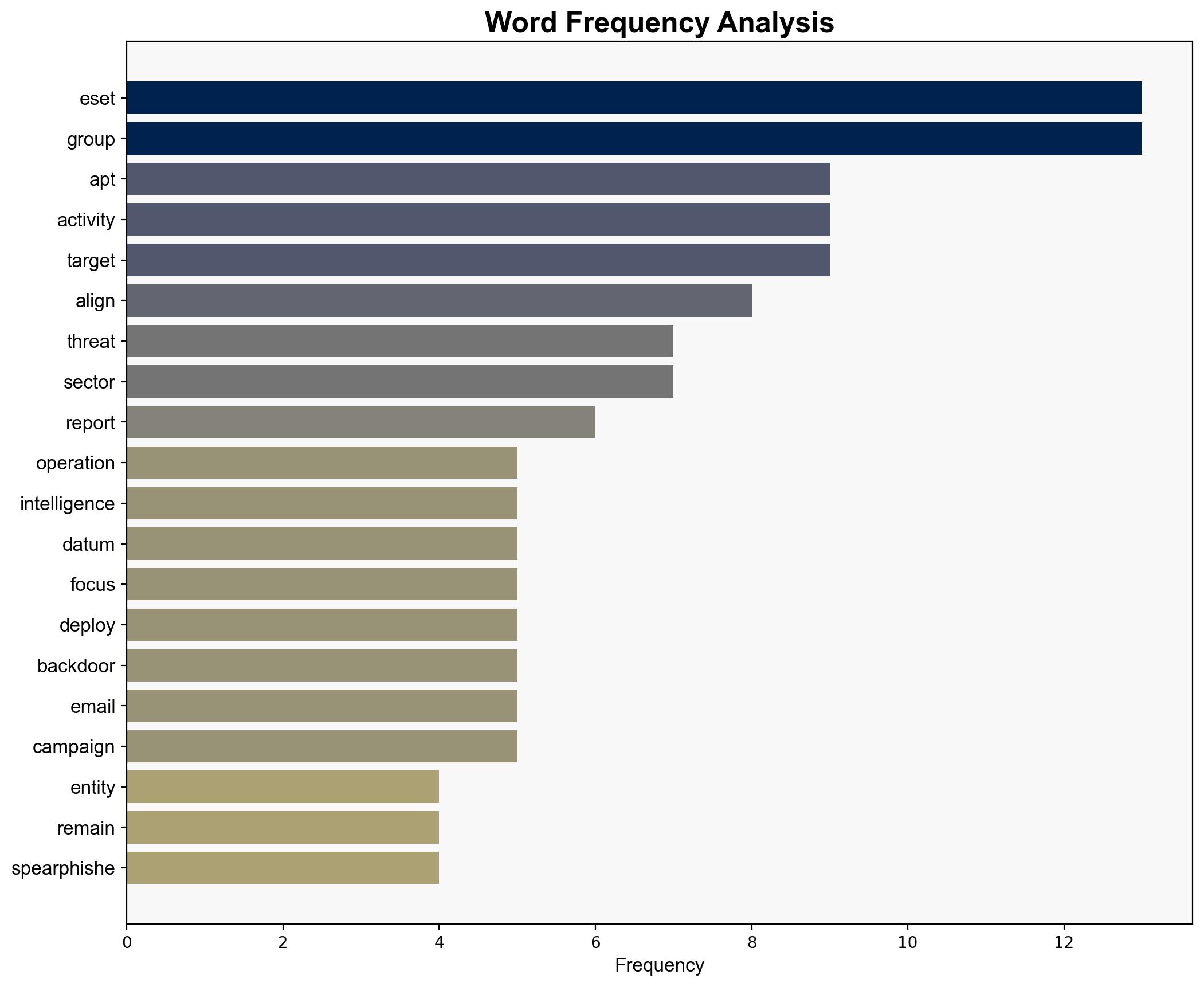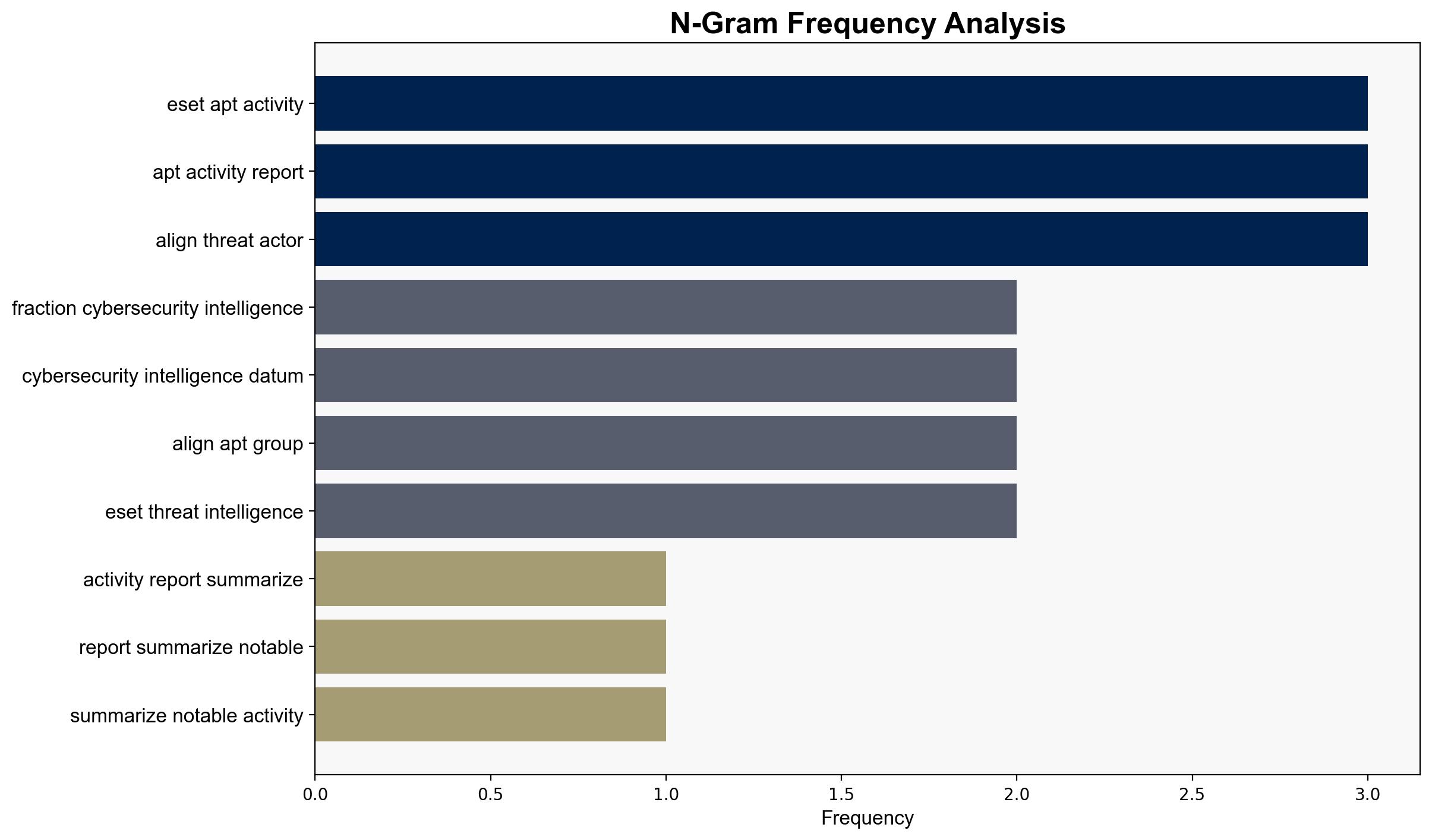ESET APT Activity Report Q2 2025Q3 2025 – We Live Security
Published on: 2025-11-06
Intelligence Report: ESET APT Activity Report Q2 2025-Q3 2025 – We Live Security
1. BLUF (Bottom Line Up Front)
The most supported hypothesis is that the observed APT activities are primarily driven by geopolitical objectives, with state-aligned groups targeting sectors that align with their respective national interests. Confidence level: High. Recommended action: Enhance international cybersecurity collaboration and intelligence sharing to counteract these state-sponsored threats.
2. Competing Hypotheses
1. **Hypothesis A**: APT activities are primarily motivated by geopolitical objectives, with state-aligned groups such as those from China, Iran, North Korea, and Russia targeting sectors that align with their national strategic interests.
2. **Hypothesis B**: APT activities are driven by economic incentives, with groups focusing on sectors that can provide financial gain through espionage or disruption.
Using Analysis of Competing Hypotheses (ACH), Hypothesis A is better supported due to the alignment of observed activities with known geopolitical tensions and strategic interests, such as China’s focus on reducing maritime dependency and North Korea’s targeting of cryptocurrency to generate revenue.
3. Key Assumptions and Red Flags
– **Assumptions**: It is assumed that the alignment of APT activities with geopolitical objectives is intentional and state-sponsored. Economic motivations are secondary.
– **Red Flags**: The possibility of false flag operations or misattribution of attacks could skew analysis. Limited visibility into the full scope of APT operations may lead to incomplete assessments.
– **Blind Spots**: Potential underestimation of non-state actors’ capabilities and motivations.
4. Implications and Strategic Risks
– **Geopolitical**: Escalation of cyber activities could lead to increased tensions between nation-states, particularly in regions like Southeast Asia and Eastern Europe.
– **Economic**: Disruption in targeted sectors such as healthcare, energy, and finance could have cascading economic impacts.
– **Cybersecurity**: Continued evolution of APT tactics, such as spearphishing and zero-day exploits, poses ongoing challenges to cybersecurity defenses.
5. Recommendations and Outlook
- Strengthen international cybersecurity alliances and intelligence sharing to improve detection and response capabilities.
- Invest in advanced threat detection technologies and employee training to mitigate spearphishing risks.
- Scenario-based projections:
- Best Case: Enhanced collaboration leads to significant disruption of APT operations.
- Worst Case: Escalation of cyber activities results in significant geopolitical conflict.
- Most Likely: Continued tit-for-tat cyber operations with periodic escalations.
6. Key Individuals and Entities
– Notable APT groups: Plushdaemon, Sinistereye, Evasive Panda, FamousSparrow, Mustang Panda, Flax Typhoon, MuddyWater, BladedFeline, Galaxygato, DeceptiveDevelopment, Lazarus, Kimsuky, Konni, Gamaredon, Turla, Sandworm.
7. Thematic Tags
national security threats, cybersecurity, counter-terrorism, regional focus





